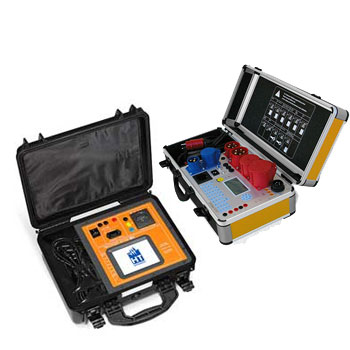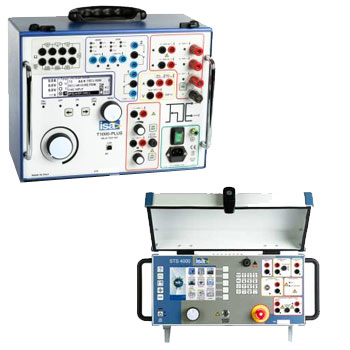- Low-wear design due to non-rotating spindle tip in the bonnet
- Low torque and smooth operation of valve handle even at high pressure
- Enhanced safety due to blow-out proof bonnet design
- Customer-specific combination of valves and instruments (hook-up) on request
- Standardised centre distances of 37 mm and 54 mm, suitable for WIKA differential pressure gauges and commonly used process transmitters
 Datasheet Datasheet |
 User Manual User Manual |

Valve Manifolds for Gauges & Differential Pressure – isolate, vent, equalize safely
Valve manifolds (2-, 3- and 5-valve) are the central interface between the process and the instrument. They enable isolation, vent/drain, and equalize functions for safe installation, calibration, and reliable operation of pressure gauges, differential pressure gauges, and transmitters. Designs such as monoflange and double block & bleed (DBB) reduce leak paths and save space.
Available in 316/316L, Duplex, Hastelloy®, Monel®, etc., with G/NPT or flanged (DIN/ASME) connections. Options include blow-out-proof stems, metal/soft seats, lockable handles, vent/test ports, and tags. On request with IEC 61518 mounting kits for transmitters and EN 10204 3.1 certificates.
FAQ on Valve Manifolds
Essentials on types, functions, selection, installation, pressure/temperature limits, sealing concepts, hygienic/Ex use, and practical tips.
Which valve manifold types exist—and for what purpose?
| Type | Functions | Typical use |
|---|---|---|
| 2-valve (Block & Bleed) | Isolate + vent/drain | Single gauge/measurement point |
| 3-valve (Hi/Lo + Equalize) | 2× isolate + equalize | Differential pressure transmitter |
| 5-valve | 2× isolate + equalize + 2× vent | DP with safe zeroing/pressure balance |
| DBB (Double Block & Bleed) | 2 blocks + 1 bleed | High tightness, maintenance |
| Monoflange | Valves integrated in flange | Compact, fewer leak paths |
What is the equalize function used for in DP measurements?
Equalize temporarily connects Hi and Lo to zero the transmitter and avoid pressure shocks during commissioning—protecting the cell and improving repeatability.
How do I commission a DP transmitter safely?
- Close both isolates, open equalize.
- Slowly open Hi, then close equalize.
- Slowly open Lo, check stability.
- Use vents/drains until the line is bubble-free.
What pressure and temperature ranges are typical?
Depends on material and seat. As guidance: 316/316L up to 420 bar and −40…+200 °C. For higher classes choose ASME 600/900/1500, high-temperature seats, and suitable gaskets.
Which thread and flange connections are supported?
| Connection | Standard | Note |
|---|---|---|
| G 1/4, G 1/2 | ISO 228 (BSPP) | Industry standard |
| ¼" NPT, ½" NPT | ASME B1.20.1 | Taper thread, use PTFE/paste |
| Flange DN/PN | EN 1092-1 | Observe facing/gasket type |
| Flange Class | ASME B16.5 | RF/RTJ per pressure/medium |
Metal seat or soft seat—which to pick?
Metal seat for high T/P and abrasive media (very robust). Soft seat (PTFE/PEEK) for best tightness at moderate T/P, but limited temperature/chemical resistance.
Which materials suit corrosive media?
316/316L for standard processes, Duplex for chlorides/sea water, Hastelloy®/Monel® for many chemicals, PTFE-lined variants for aggressive media. Always check compatibility.
How do I prevent leaks during installation?
- Clean threads; apply suitable sealant (PTFE tape/paste).
- Use specified torque; avoid side loads.
- Inspect faces/flanges for damage; fit new gaskets.
Are there standards/regulations to observe?
Depending on application: PED, TA-Luft / ISO 15848 (fugitive emissions), material certificates EN 10204 3.1, and ATEX/IECEx in hazardous areas if applicable.
How to connect a gauge via a 2-valve block safely?
Shut the process, vent/depressurize the gauge side, mount the gauge, open slowly, and leak-test. For replacement: isolate first, then depressurize via bleed.
What are the advantages of a monoflange vs. individual valves?
Fewer leak points, compact layout, lower mass, and simplified installation—ideal where space is limited or tightness is critical.
How do I integrate test and calibration ports?
Select manifolds with additional test ports (e.g., 1/4" NPT) or add T-pieces. Enables in-situ tests without shutting down the process.
Which stem/sealing concepts are common?
Blow-out-proof stems, back-seating designs, O-ring/packing seals, optional anti-static features. Match seal materials to media/temperature.
Tips for routing and supporting impulse lines?
- Short, well-supported lines; avoid vibration.
- Provide slope for drain/vent (consider gas/liquid).
- Thermal decoupling/insulation at high temperatures.
Are valve manifolds suitable for hygienic processes?
Yes—together with flush diaphragm seals and low-dead-space fittings. Observe surface finish and gaskets (FDA/EU 1935/2004) and ensure cleanability.
What tests are available?
Pressure tests (hydro), tightness tests (helium/air), and documentation such as 3.1 certificates and pressure/leak test reports are available on request.
What to consider for hazardous areas (Ex)?
Ensure conductive connections/grounding, use suitable tools, and anti-static components. For NAMUR/switch signals, use appropriate barriers/isolators.
Does ICS Schneider support selection & configuration?
Yes. We define type, materials, connections, seat/sealing, test ports, and can supply fully pre-assembled sets (with transmitter/gauge, IEC 61518 mounting, certificates) on request.











































































































































































